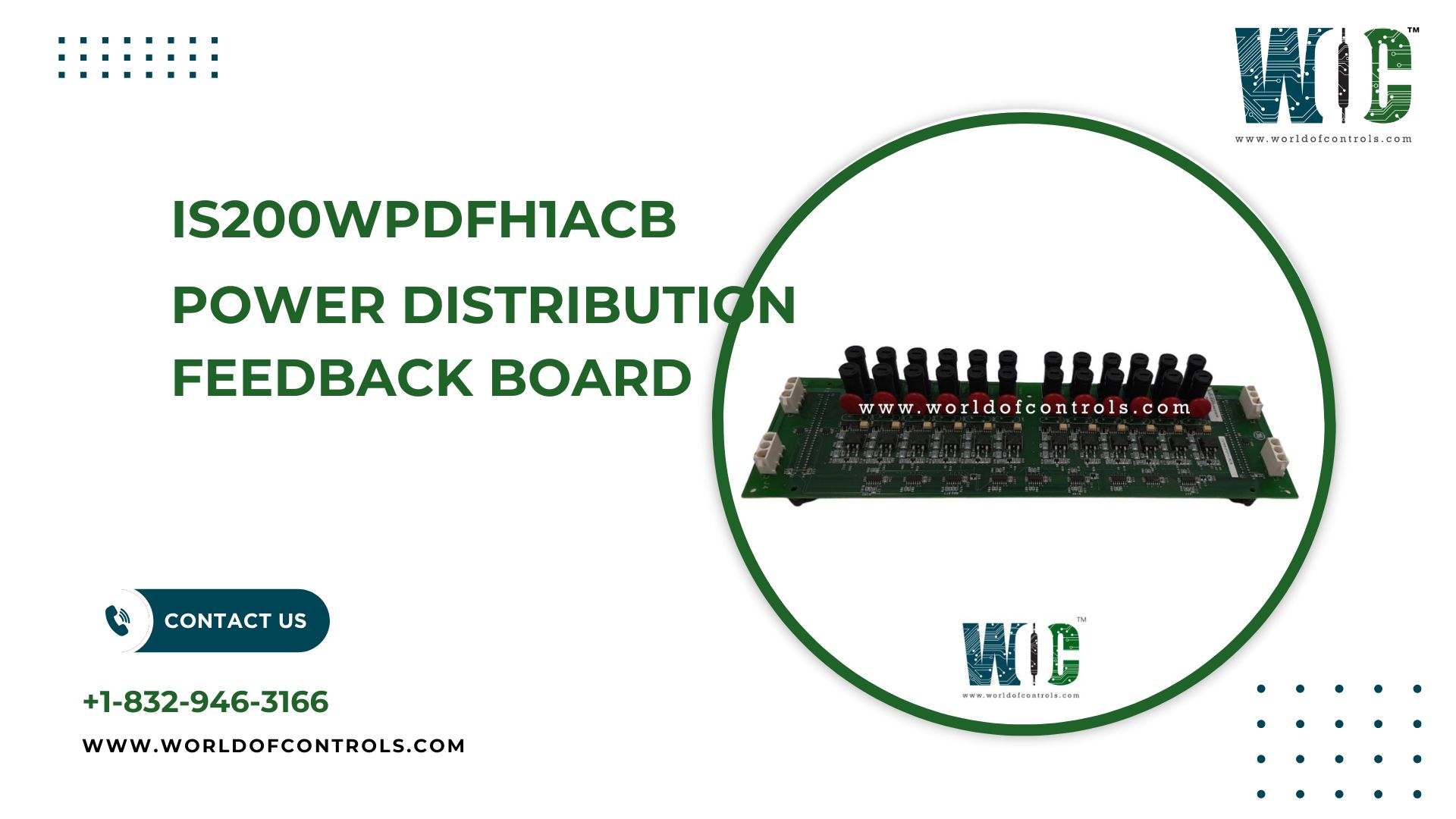
Introduction
In the fast-paced and high-demand world of industrial power generation, precision and reliability are everything. Whether in gas or steam turbine systems, the need for accurate power control and real-time system monitoring is critical. One often-overlooked yet essential component in achieving this is the Power Distribution Feedback Board. This guide explores its function, structure, and value—particularly in modern turbine control systems like those found in energy facilities worldwide.
What is a Power Distribution Feedback Board?
A Power Distribution Feedback Board is an industrial-grade control board that manages power distribution while providing real-time feedback on electrical status. Designed to serve as an interface between control systems and field devices, this board distributes power to components such as solenoids, contactors, and sensors—while simultaneously monitoring the health and integrity of those power channels.
Its dual role makes it indispensable:
- Distributing electrical power to various field devices and subsystems.
- Monitoring and reporting key metrics like voltage levels, fuse integrity, and continuity.
Why It Matters in Turbine Systems
In modern turbine control architectures—especially those used in large-scale energy production—each subsystem depends on stable, clean power. These include fuel delivery systems, lube oil systems, safety shutdown circuits, and many more.
The power distribution feedback board ensures that:
- Each of these subsystems gets the correct voltage and current.
- Electrical faults (e.g., blown fuses, voltage drops) are detected instantly.
- Operators are alerted to issues before they evolve into full system failures.
Its inclusion enhances both operational reliability and safety compliance—critical priorities in turbine environments.
Key Features and Functions
- Real-Time Electrical Monitoring
The board constantly checks voltage levels and fuse conditions, ensuring that power is not only flowing but doing so within safe operational thresholds.
- Intelligent Feedback Signals
It sends feedback to the control system, helping engineers and operators quickly identify which areas of the system require attention—often before alarms are triggered.
- Protection Mechanisms
Each circuit typically includes built-in fusing, protecting field devices from overload conditions and isolating faults to prevent system-wide disruptions.
- Environmental Resilience
Designed to operate in harsh industrial conditions, these boards are built for thermal stability, vibration tolerance, and long-term durability.
How Engineers Benefit
✅ Faster Troubleshooting
When a problem occurs, feedback from the board points directly to the affected circuit, reducing time spent on diagnostics.
✅ Improved Maintenance Planning
Real-time data enables predictive maintenance strategies, helping teams replace components before failure, not after.
✅ Simplified Integration
By combining power distribution and feedback in one unit, these boards streamline panel layouts, reduce wiring complexity, and enhance system modularity.
Applications in the Turbine Industry
In both gas and steam turbine systems, power feedback boards are used to:
- Power hydraulic and pneumatic actuators that regulate fuel and airflow
- Monitor shutdown circuits and interlocks
- Interface with relay output modules to execute control logic
- Enable redundancy and failover mechanisms in safety-critical processes
They are particularly useful in platforms that require high-speed diagnostics, modular control, and real-time monitoring, such as distributed control systems in power plants and industrial automation.
Conclusion
The Power Distribution Feedback Board may not be the most visible component in a turbine system, but its role is foundational to keeping operations stable, safe, and efficient. By managing power flow and delivering real-time diagnostics, it enables engineers to maintain peak system performance and respond quickly to any emerging issues.
For engineers involved in power generation or industrial automation, understanding this board’s function and integration is vital. As turbine systems grow smarter and more interconnected, components like the power distribution feedback board will continue to be essential in enabling the next generation of energy solutions.